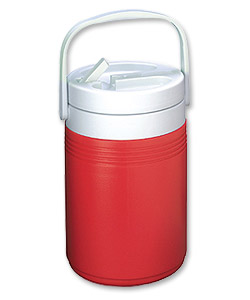 A few months ago after going in for a checkup, my alternative-based doctor added another vitamin to the list I'm already taking. On top of the Vitamin C, B vitamin complex, and calcium, she recommended I take a daily Vitamin D capsule. She warned me that although I spend much of my time in the sun, the majority of Americans aren't getting enough Vitamin D. Since I don't drink milk and only eat eggs and fish occasionally, all foods that are rich in Vitamin D, I am likely one of the Americans deficient of Vitamin D.
A few months ago after going in for a checkup, my alternative-based doctor added another vitamin to the list I'm already taking. On top of the Vitamin C, B vitamin complex, and calcium, she recommended I take a daily Vitamin D capsule. She warned me that although I spend much of my time in the sun, the majority of Americans aren't getting enough Vitamin D. Since I don't drink milk and only eat eggs and fish occasionally, all foods that are rich in Vitamin D, I am likely one of the Americans deficient of Vitamin D.According to Scientific American, 3/4 of American's adults and teens are deficient in vitamin D, and CNN reports that 70% of America's kids are below recommended levels.
Vitamin D's primary role is aiding in the absorption of calcium, helping to support strong bones. Vitamin D has also been linked to protecting against osteoporosis, diabetes, hypertension, and certain cancers and autoimmune diseases. CNN reports that for children, low levels may increase the risk of heart disease later in life.
Since Vitamin D plays a role in bone metabolism, it is essential that growing children and athletes involved in hard-impact sports are getting enough of it. However, studies have shown that most likely, neither group is meeting adequate levels. A study done by the National Institutes of Health tested 18 gymnasts for vitamin D and found that 15 of them had levels lower than the recommended guidelines. The study went on to conclude that athletes should probably be tested for vitamin D levels.
So how can one get enough vitamin D? Well, vitamin D, also known as the sunshine vitamin, can only be made when the body is exposed to sunshine. It is said that in Northern latitutdes during the seasons of spring, summer, and fall, as little as 15 minutes of sunshine a day will provide adequate amounts. I found this to be interesting considering my doctor receive
 d tests saying I indeed do have low "D" levels. With so many Americans being deficient, are we really not spending at least 15 minutes in the sun a day? I find this to be hard believe. But anyways, there are other ways to ensure that you get enough vitamin D. Most milk is enhanced with the vitamin, and foods such as salmon, sardines, shrimp, cod, and eggs also contain a fair amount. Many experts also recommend taking a supplement. Since my tests showed I had a deficiency, my doctor has me taking 5000 IU a day, however there are many supplements that contain lower amounts such as 500-1000 IU. In general, most nutritionists say that doing a combination of getting enough sun, eating D-rich foods, and taking a supplement is best.
d tests saying I indeed do have low "D" levels. With so many Americans being deficient, are we really not spending at least 15 minutes in the sun a day? I find this to be hard believe. But anyways, there are other ways to ensure that you get enough vitamin D. Most milk is enhanced with the vitamin, and foods such as salmon, sardines, shrimp, cod, and eggs also contain a fair amount. Many experts also recommend taking a supplement. Since my tests showed I had a deficiency, my doctor has me taking 5000 IU a day, however there are many supplements that contain lower amounts such as 500-1000 IU. In general, most nutritionists say that doing a combination of getting enough sun, eating D-rich foods, and taking a supplement is best.The National Academy of Sciences set upper intake levels for children and adults at 2000 IU daily. The National Academy of Sciences also set the adequate daily amount of Vitamin D at 200 IU for children and adults up to age 50, 400 for adults ages 51-70, and 600 for those 70 and over. However many experts recommend much higher amounts, and these amounts are subject to raise, with new adequate amounts expected to be put out in May 2010. Also, many studies have shown that higher levels are particularly important for certain groups of people. The group
 s consist of those living in northern areas such as the Pacific Northwest or the New England states, those who are obese, and people who often stay indoors due to professions or personal habits such as an excessive use of sunscreen. African Americans and those with naturally darker skin are also recommended to intake higher levels because these people have more melanin or pigment in their skin, making it harder to absorb vitamin D coming from the sun. The recommended amount for above groups of people is at least 1,000 IU per day.
s consist of those living in northern areas such as the Pacific Northwest or the New England states, those who are obese, and people who often stay indoors due to professions or personal habits such as an excessive use of sunscreen. African Americans and those with naturally darker skin are also recommended to intake higher levels because these people have more melanin or pigment in their skin, making it harder to absorb vitamin D coming from the sun. The recommended amount for above groups of people is at least 1,000 IU per day.If you fall in any of the above categories, or fear that you may be lacking vitamin D, talk to your doctor about taking a supplement. Vitamin D is important in more ways than one, and deficiencies can lead to serious damage. And as always, remember to get out there and enjoy the Fresh-Air, providing nature's natural source of vitamin D.




































